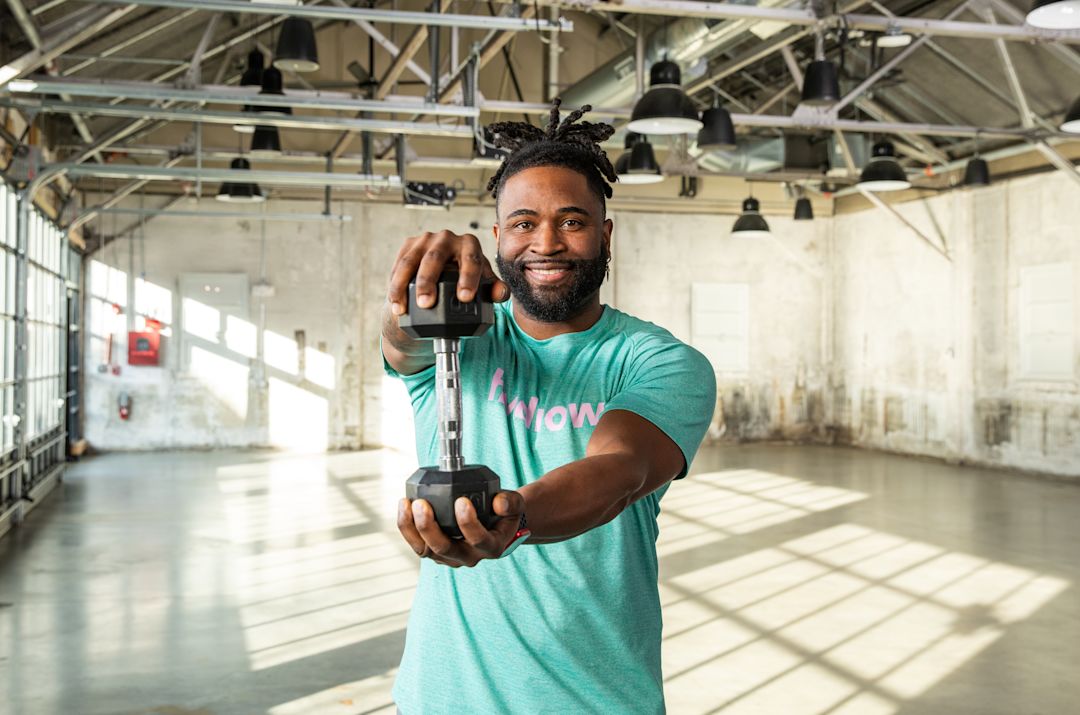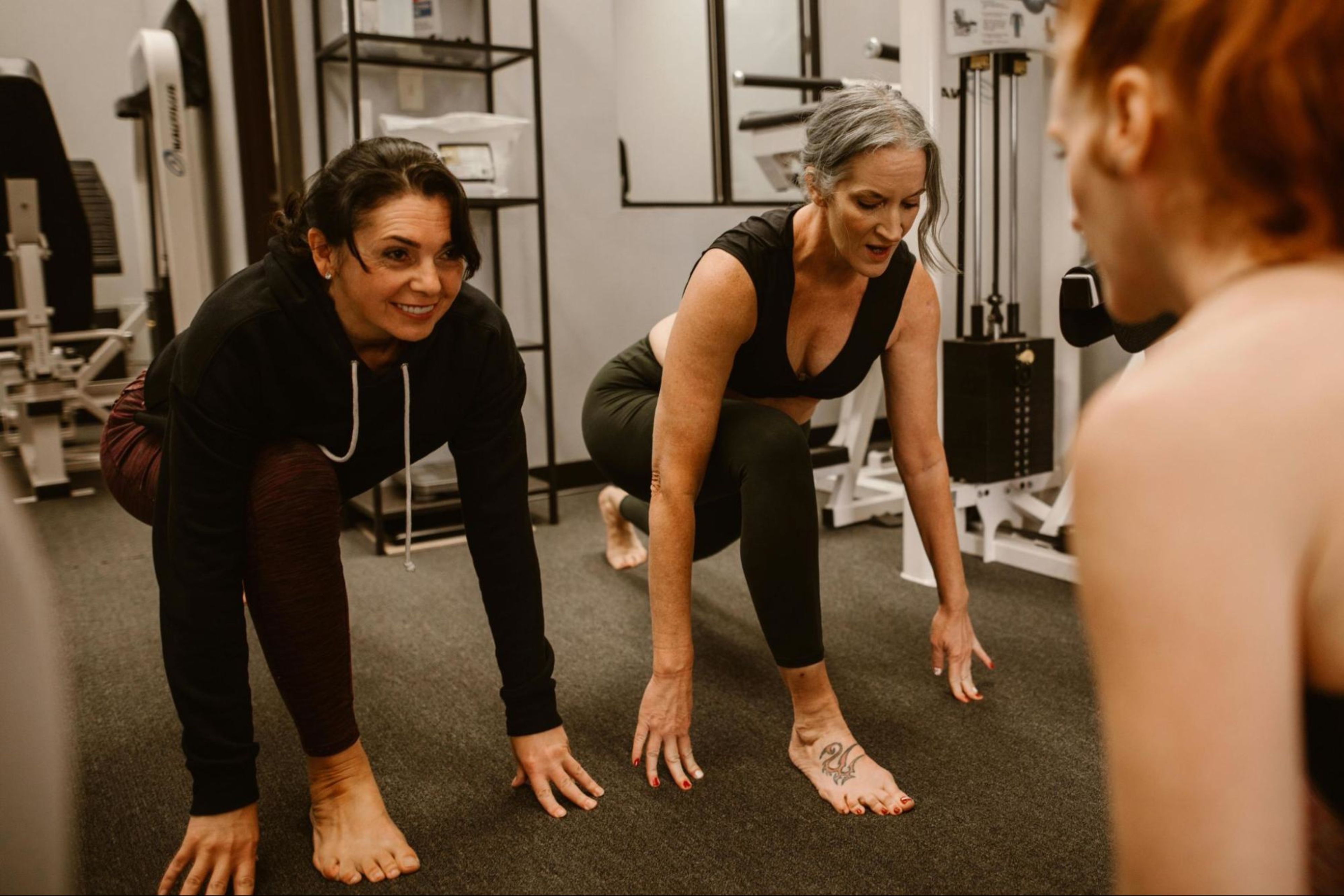Does Strength Training Build Muscle?

If you’re new to the fitness community (or even if you’ve been here for a while!), you’ve likely noticed that it comes with its own vocabulary. From all the different types of workouts to the different formats and ways to train, it can be difficult to keep up. Some things are super specific, while others are super vague. One that falls into the second category is the term “strength training”, so we’re here to offer a definitive breakdown.
Does strength training build muscle? Find out here, along with everything else you need to know about effective strength training and muscle building, including:
Let’s jump in!
What is strength training?
By definition, strength training (also known as resistance training) is a type of exercise that causes your muscles to contract against an outside resistance. That outside resistance could be from your own body weight, weight machines, medicine balls, resistance bands, or dumbbells. The goal of strength training is—you guessed it!—to strengthen your muscles. And how do you do that? By pushing, pulling, squatting, and lunging against a resistance, even if it’s your own body weight.
Will strength training build muscle?
So, will strength training build muscle? Absolutely. In fact, it’s the primary goal and the basis from which all the fitness and health benefits of strength training come. The key component of strength training that builds muscle is the resistance we mentioned above. You need to put your muscles under some level of stress in order to stimulate muscle growth, which is exactly what strength training does.

Explore Hydrow's library of strength training workouts.
The science behind muscle growth
The way that muscles grow can seem a bit counterintuitive. Why? In order to make your muscles bigger or stronger, you first have to break them down. When you lift weights or work out with your own bodyweight, each challenging rep is creating microtears in the muscle fibers (don’t worry, you won’t feel or physically notice these).
Then, after your workout, your body will prompt cells to go to your muscles and repair these tears. The result? Your muscles come back stronger than they were before.
Another way to think about this is in terms of muscle mass. When your muscle fibers are repaired, you’re left with more muscle fibers than you had before, increasing your muscle mass. In order for your muscle tissue to repair and come back stronger, you have to fuel this repair process with protein. In other words, how you build strength is also a function of nutrition.
Factors that affect muscle growth with strength training
There are three main factors that influence how effectively you will build muscle with strength training. They are:
Workout
Age
Nutrition
1. Workout
This one may be a given, but the form of resistance you are using, how often you are strength training and for how long will affect your muscle growth.
There is no exact formula for achieving muscle growth with strength training, but a general question to ask yourself is: Are you feeling challenged? If you reach the end of a strength training workout and you haven’t struggled to complete a set, you likely aren’t doing enough to achieve muscle growth. But if you’re working hard and challenging yourself, you’re likely going to see results.

Efficiency for the win.
Work 86% of your muscles in just 20 minutes of rowing with Hydrow.
2. Age
In general, younger people have an easier time building muscle than older people, for two reasons. First, you start to lose muscle mass naturally beginning in your 30s. And second, levels of hormones that influence your ability to build muscle, like testosterone and growth hormone, decline with age.
The combination of these two factors mean that the older you get, the harder you have to work to maintain your muscle mass, let alone increase it. However, it is still possible to build muscle at any age! While it may mean more attention to nutrition, exercise routine, consistency, and recovery, you just have to challenge yourself in different and smarter ways to maintain your muscle mass.
3. Nutrition
If you’re not eating right, it won’t matter how long or tough your workouts are. If you’re not giving your body the nutrients it needs—which includes a mix of protein, healthy fats, and complex carbohydrates—to stimulate muscle growth, you’re putting yourself at a big disadvantage.
Common myths about strength training and building muscle
Since we’re pulling back the curtain on everything about strength training and building muscle, let’s address three of the most common myths surrounding it:
Myth No. 1: You have to lift heavy weights to build muscle
Nope! You can get stronger from only lifting light weights or working out with resistance bands or your own bodyweight. The key is challenging yourself and maximizing your muscles’ time under tension, or the time during which they are engaged and working. Lifting lighter weights is especially helpful for keeping your function and mobility active.

Explore Hydrow’s library of 5,000+ rowing, circuit training, yoga, Pilates, and mobility workouts.
Myth No. 2: Strength training makes you bulky
Wrong again. While bodybuilders do use strength training to grow their muscles, not everyone is going to get the same results. The muscle growth and bulk typically associated with bodybuilders takes years to build and is the result of following a specifically designed training program and nutrition plan.
If you are choosing the right formats of strength training to achieve your goals—whether that’s to get long and lean muscles or simply feel stronger and more capable—you won’t suddenly wake up one day with bulky muscles you don’t want.
Myth No. 3: Strength training isn’t for older people
Incorrect. In fact, the opposite is true: Strength training is incredibly important for older people. It helps them build muscle or maintain their muscle mass, which in turn improves balance, mobility and metabolism with age.
Related blog: The Benefits of Strength Training During Menopause
Tips for getting started with strength training to build muscle
Ready to start strength training? Here are our top three tips for getting started with strength training to build muscle.
Start slow: Don’t jump right into lifting heavy weights. To avoid possible injuries, start low and slow and master proper form before working your way up.
Mix it up: Don’t be afraid to go heavy one day and then just do bodyweight exercises the next. Challenging your muscles in different ways is the best way to see results fast.
Power up the protein: Protein is the most important part of your nutrition for muscle tissue repair post-workout, which is what builds strength. Especially on days when you are strength training, enjoy protein sources like lean meat, fish, and poultry before and after your workout.
Related blog: 30 High-Protein Snacks to Build Muscle and Fight Hunger
Build muscle and get stronger today with Hydrow!
Can strength training build muscle? Yes it can—and it will also deliver benefits like better balance and mobility, less joint pain, and of course, stronger muscles.
Ready to take your fitness routine to the next level? Hydrow offers guided strength training workouts for every fitness level, all led by world-class Athletes who coach you through each movement and help you stay consistent. Additionally, our rowing workouts target 86% of your muscles with every stroke, delivering full-body training and real results.
Explore Hydrow’s strength workouts and see how far you can go.

Real strength keeps moving
Learn how working out with Hydrow can help support a fuller, more active life.










